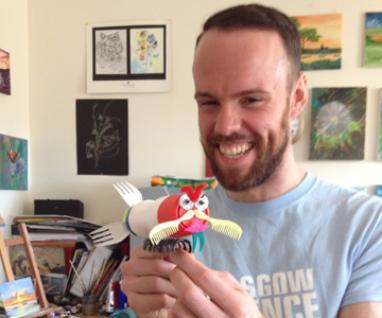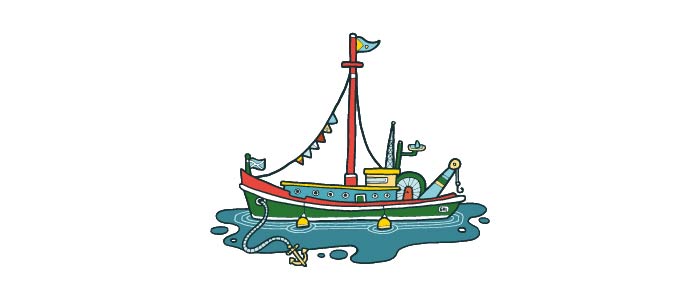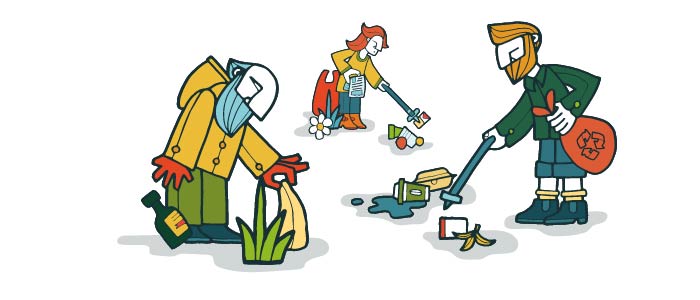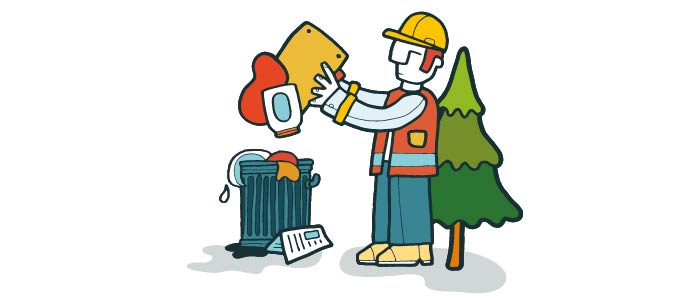Cleaner Canal Science
Cleaner Canal Science brought together school children, local businesses and communities in Glasgow and Clydebank to put the problem of littering the 250-year-old Forth & Clyde Canal under the microscope.
This Zero Waste Scotland-funded project got everyone thinking afresh about littering, its impact on wildlife and our personal responsibility to keep canals clean.
Cleaner Canal Science aimed to evolve the standard litter pick into a scientifically robust investigation looking at the root sources of litter pollution, using well established biodiversity sampling methodologies and statistical analyses. Once we better understand a problem, we are better equipped to tackle it.
Research and Results
The Methods
Taking inspiration from techniques used by biologists to study wildlife, the Glasgow Science Festival team pioneered scientific methodology as a way of observing, classifying and analysing litter.
Citizen scientists of all ages studied litter “populations” by measuring sample areas and recording the number and type of “species” found – be it Irn Bru can, plastic bag or glass bottle. Multiple samples were taken along the canal in Maryhill, Firhill and Clydebank, providing valuable data on the main causes of litter.
Staff from Tesco in Maryhill and Asda and McDonalds in Clydebank joined Cleaner Canal Science sessions and 40 community volunteers took part in a litter-pick at Lambhill Stables. A further 140 people of all ages teamed up with ten researchers from the University of Glasgow at our open day at Lambhill Stables.
Armed with buckets, bin bags, measuring tapes and scales, children from St Charles Primary School and St Mary’s Primary School in Maryhill and Kilbowie Primary School in Clydebank were natural scientists in the field. Back in the classroom, children practised their analytical skills by drawing graphs and posters to show off their results.
The Results
There were a total of 40 transects sampled throughout the duration of the project; 21 from the schools, 8 from businesses and 11 from the Lambhill community groups.
What was collected?
Across all 40 transects, a total of 620 items were collected.
- 19.4% were aluminium cans
- 10.6% were plastic-other
- 8.5% plastic fizzy drink bottles
- 8.2% plastic snacks/ food packaging
- 7.9% were glass bottles
These 5 species accounted for nearly 55% of all items collected out of a list of 111 species.
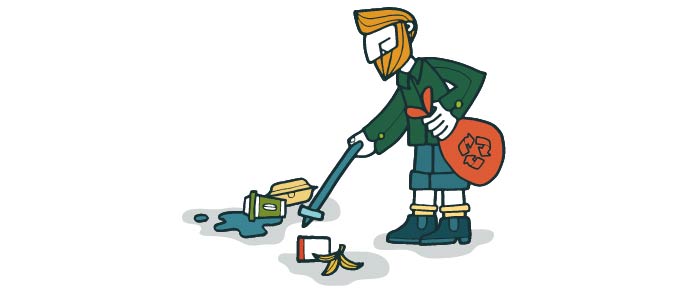
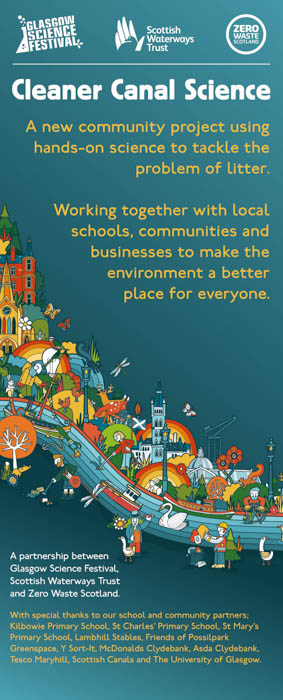
Local Business Staff
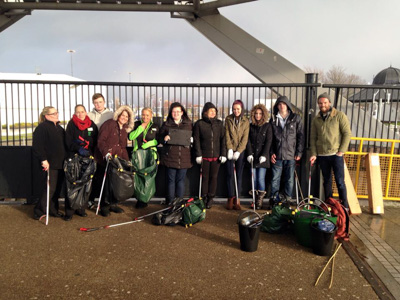
Local Schools
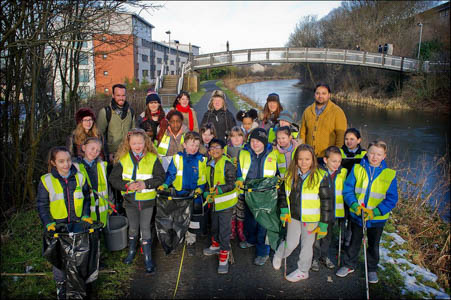
The Floating Laboratory
After the fieldwork was complete, it was all aboard the Forth & Clyde Canal Society’s ‘Voyager’ boat for more fun experiments with the science festival team.
We tuned in to the sounds of water-loving wildlife through a hydrophone, watched plankton loom large under a microscope and identified water birds as we cruised along the canal on our floating lab. Observing the diverse range of habitats and wildlife on the canal up close helped everyone better understand the harmful effect of careless littering on this special ecosystem.
Testing Water Samples
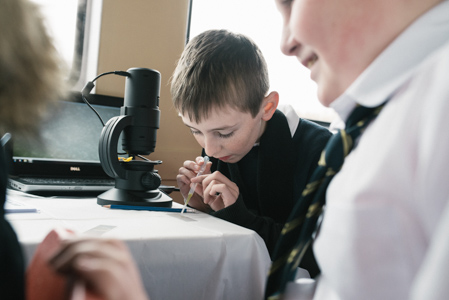
What's in the water?
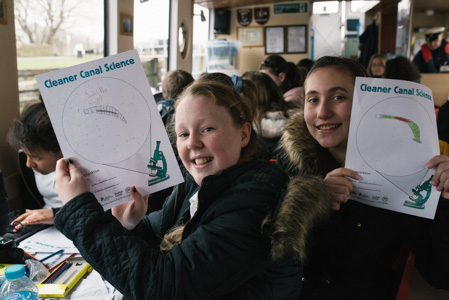
Lambhill Community Day
On Saturday 21st March 2015 Cleaner Canal Science docked at Lambhill Stables for a day of crafts, cakes and a litter pick.
The Floating Lab was moored on the canal with marine biologists on board to discuss life in the canal and how we can use science to tackle the problem of litter. Activities on board included making litterbugs, acoustic hydrophones under the water and microscopy.
Litterbugs!
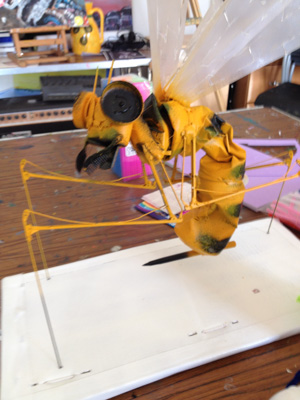
Preparing the Transect
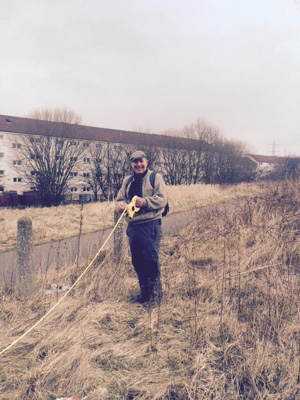
Cleaner Canal Science at Science Sunday
Science Sunday was one of the main family day events during GSF 2015 on Sunday 14th June 2015 showcasing University of Glasgow research.
Cleaner Canal Science presented an exhibition featuring information about the project and local artist Barry Neeson's Litterbug Sculpture.
Litterbug Sculpture
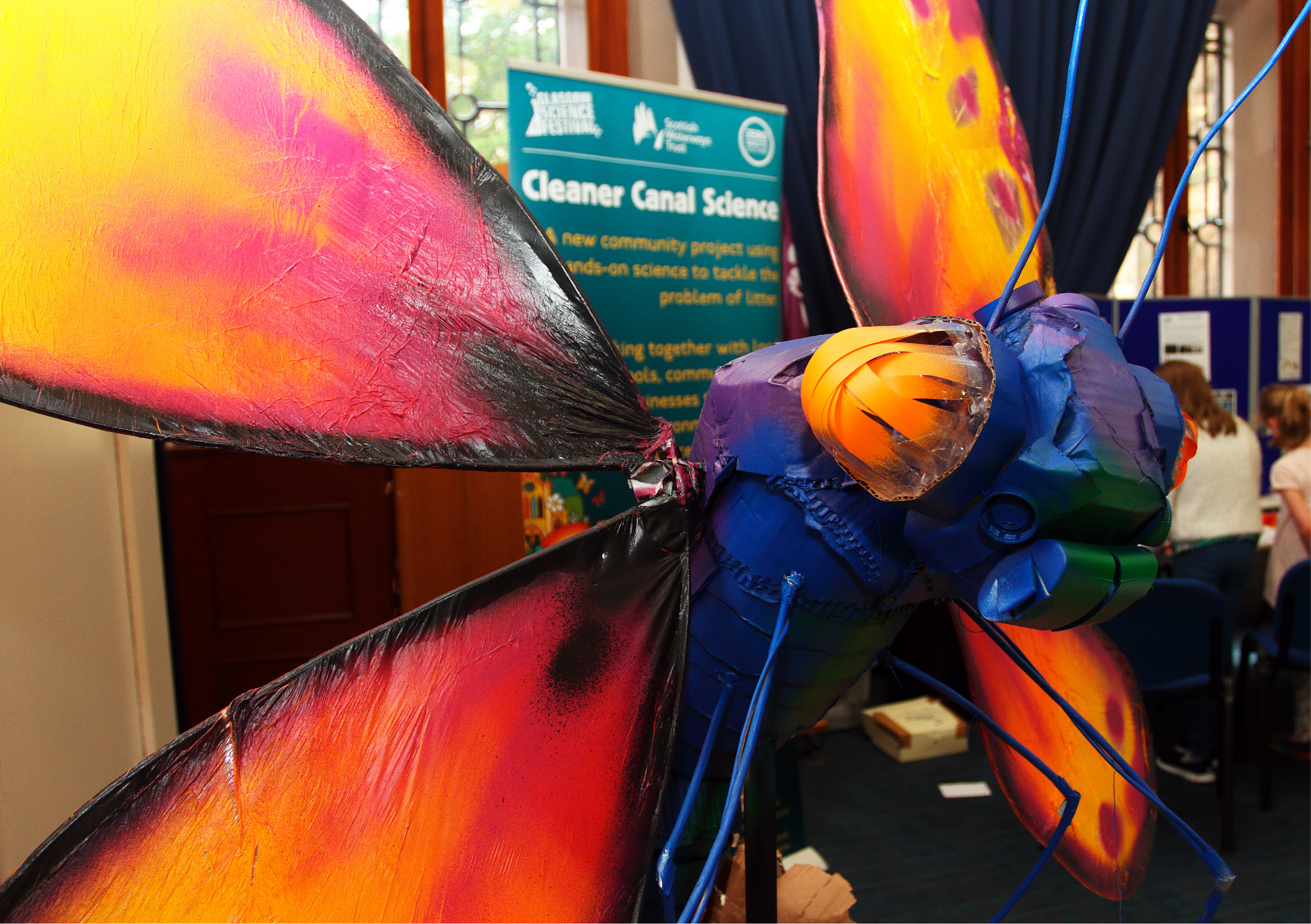
Create your own Litterbug
